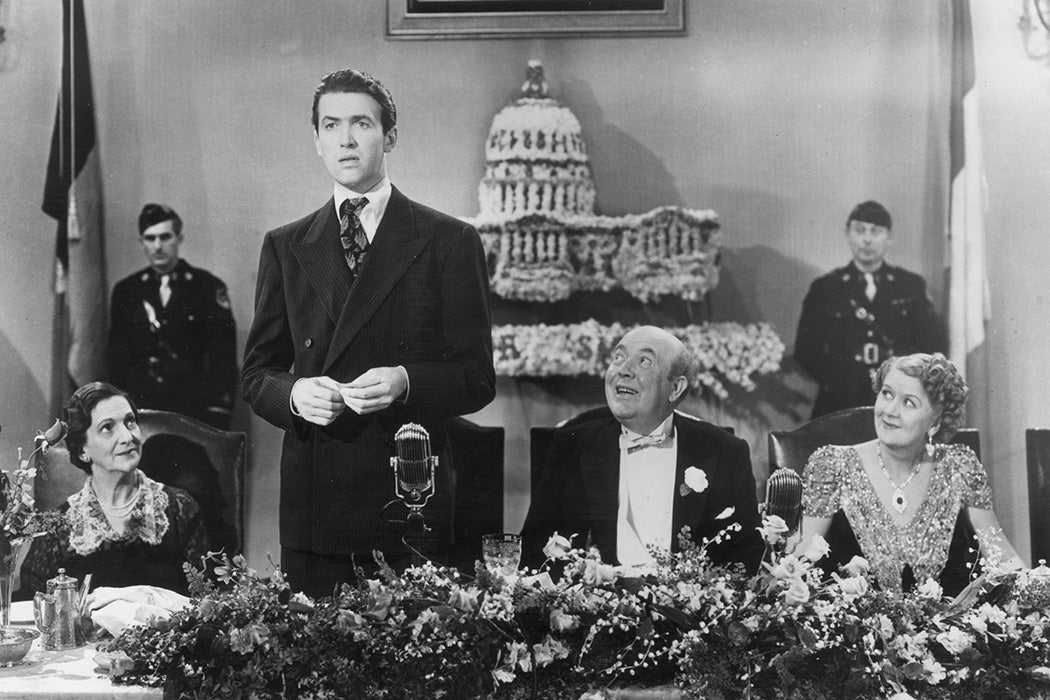How is a president supposed to act? Pointing to the Constitution and the rule of law doesn’t quite get to the heart of the matter; the answer also has to be about image. The way people understand that image has not only come through the behavior of actual presidents, but also through the portrayal of fictional ones. As media and journalism researcher Elizabeth A. Skewes writes, “presidential portrayals that audiences find in movies often say more about the political and social culture in the time that the movies are made than they say about the presidents being depicted.”
Take the representation of Franklin D. Roosevelt. His presidency happened during the Great Depression, when Americans looked for hope and strength. As Skewes explains, “Because of FDR’s unprecedented tenure in the White House and because of his intriguing personal life, his character appears in a wide variety of films […] whatever type of role that FDR has in a film—whether a central one or a tertiary one—he generally incites confidence.” There have been FDRs in everything from the play-turned-biopic Sunrise at Campobello to the musical Annie.
When the idea and the office of the president was regarded with a sort of reverence, presidential representations were more heroic, historian Dean J. Kotlowski writes, pointing to the “schmaltzy, character-themed biographies” of the 1930s through early ’60s. And in a sort of reversal, where a fictional representation led to a very nonfictional one, researchers Michael P. Rogin and Kathleen Moran note that the political film Mr. Smith Goes to Washington had a strong influence on the nation’s highest office: “Only one American president deliberately modeled himself on the Frank Capra hero. That actor, who began his career in New Deal Hollywood and ended up in the White House, was Ronald Reagan.”
Film representations of presidents can also serve as a way to assuage some of our fears. If, for example, we’re living in a world where the threat of nuclear war hangs over us, fictional presidents might be shown handling that threat, Kotlowski explains. The films Dr. Strangelove and Seven Days in May both, in very different ways, explored this fear during the Cold War.
Weekly Newsletter
Movie presidents might even be a bit of wish fulfillment, a hope for something that doesn’t yet exist. Black presidents, for example, have been depicted on film as far back as 1933, and women as early as 1924 (though all of these representations certainly weren’t positive). Bill Clinton’s presidency saw the launch of The West Wing, a show that, as Kotlowski writes, “used language to elevate audiences’ perceptions of this office and political discourse in general.” In short, if there is uncertainty about the real thing, we can always turn to the fictional to reaffirm our belief in the system.







